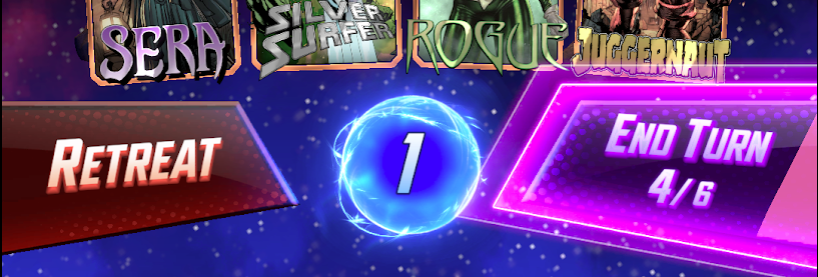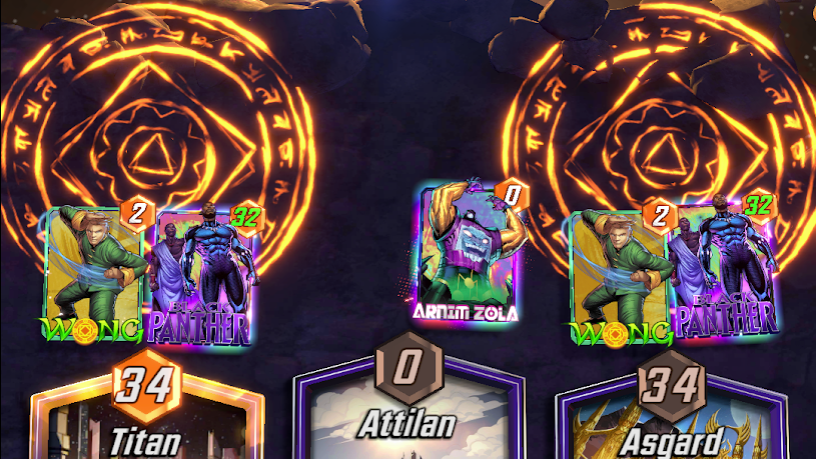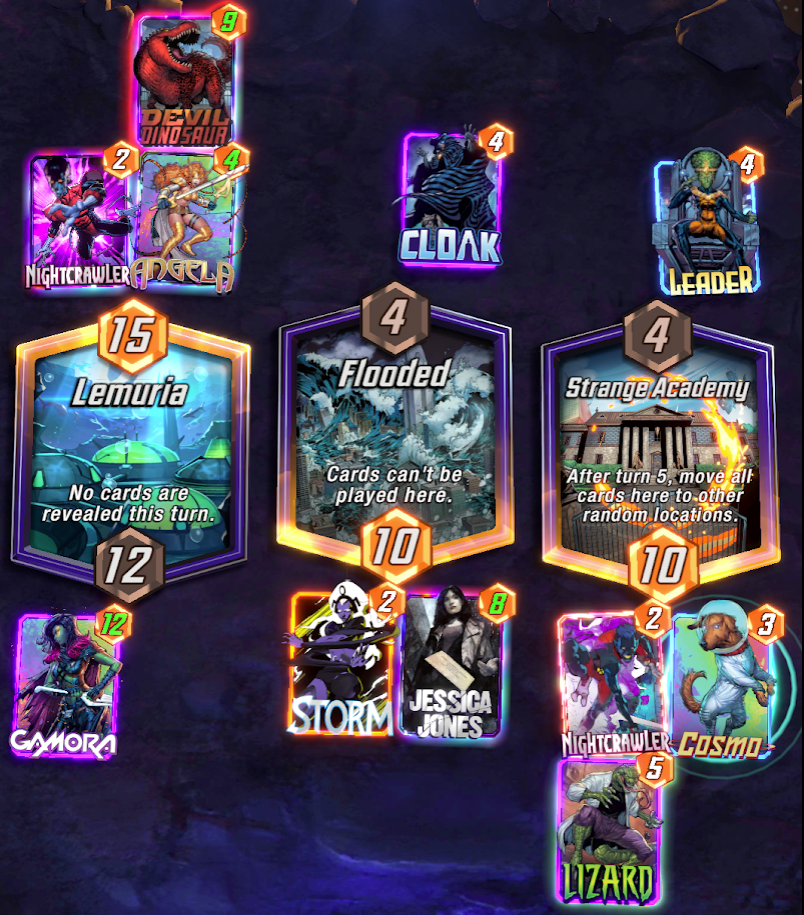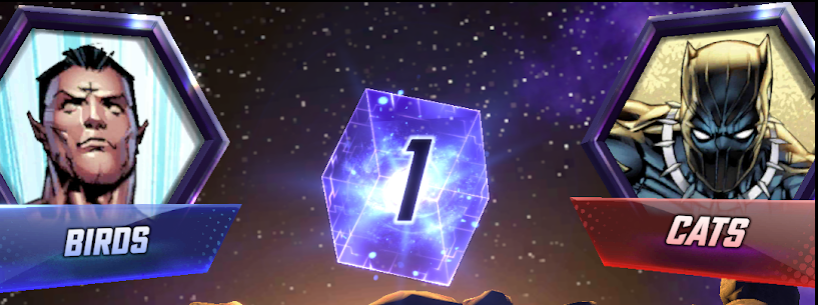Mental Game, Pt. 1
“I survived because I willed it to be.” – Emma Frost
Take Your Time
Every turn gives you 30 seconds to plan your line - use it!
Too often, players slam down their cards and hit “End Turn” only to realize too late there was a better play.

Winning at high levels of play requires every possible advantage, so taking a second to double-check your math could be the difference between winning and losing 8 cubes.
Before you hit the end turn button, have you:
- Studied the available locations and identified any possible synergies with your hand?
- Identified any possible win conditions on the board so far?
- Figured out a line for all the cards in your hand?
- Guessed at what play your opponent will make next?
- Double-checked your math?
- Made sure you’re playing your cards in the right order?
Is your current play the best possible option? Don’t hit “End Turn” until you’re sure!
Talk Out Loud
Talking out loud is incredibly helpful for improving your decision-making.
Explaining your thought process helps connect the dots between your current play and your next one, and supports building a stronger line for the rest of the game.
- What’s your plan?
- Does it still make sense when you say it out loud?
When you verbalize your thought process and think out loud, you’re more likely to catch mistakes and consider alternatives. It also helps you stay focused and present in the game, not distracted or lost in thought.
Comparing your options out loud helps think through details that are easy to overlook, like bad locations and counter-plays from your opponent. It’s much easier to make a bad play when you’re running on autopilot.

Study Your Opponent
Carefully studying your opponent and their plays can grant you a massive advantage.
Pay Attention
There are a ton of little details you might notice about your opponent:
Name • Title • Avatar
Card Backs • Card Quality • Card Placement
Snap Aggression • Emote Usage • Turn Length
Individually, these may seem like small things, but taken together they can give you a better understanding of your opponent and their playstyle.
For example:
- Players with gold or ink cards prefer decks that use those cards heavily.
- Players with card backs from the beta are likely very experienced.
- Players that take a long time each turn may be careful decision-makers.
- Players that spam emotes may be try to goad you into a mistake.

Similarly, think about what your opponent might think of you. Do you want to come across like an expert? Maybe a beginner?
Of course, your opponent might be a bot. A quick “Hello!” or fist-bump emote is a great way to check if there’s a human on the other end.
Figure Out Their Deck
With each new card your opponent plays, you gather more information to guess at their deck archetype. Especially at higher levels, players often run one of just a few meta decks.
Knowing these decks - especially when you play them yourself - can help you make more informed decisions about which cards to play and when.
What deck is your opponent running?
Predict Their Moves
Once you have identified your opponent’s deck archetype, you can make educated guesses as to what they’ll play next. This enables you to play your cards to specifically disrupt them.

If your opponent plays Bucky Barnes on turn 2, they’ll likely follow it up with Carnage or Deathlok. Can you play Cosmo or Armor to block their play in time? You may want to choose your next play specifically to gain priority.
However, this also likely means they’ll be playing more destroy cards in other lanes later. If the locations limit their options, maybe you’re better off playing Cosmo in a different lane instead? Consider the state of the final game board and choose your line accordingly.
Remember Their Names
Matchmaking in Snap depends on three main factors - Collection Level, Rank, and MMR (Matchmaking Rating).
Because players progress fairly steadily, it’s likely you’ll be matching against a relatively small group of players. This effect increases dramatically as you rank up, and at certain times of day. You likely already recognize several player names across multiple games.
Playing the same opponents multiple times allows you to collect information on them. You can learn which types of decks they run, how aggressively they snap, and whether or not they make good decisions.
This information can give you a significant advantage in future games against them. For example, if you know that your opponent tends to play more defensively, you can plan to be more aggressive and try to put pressure on them. On the other hand, if you know that your opponent is prone to making risky plays, you can try to bait them into making mistakes and capitalize on their misplays.

How far exactly you want to take this is up to you. While you can certainly keep detailed notes on each player, just saying their name out loud is a great way to start building associations.
For an example of this in action, watch this clip from Snap YouTuber TLSG as he tests out a new deck. His practice of saying his opponent’s name at the start of each match is enough to build associations and start recognizing repeat players.
